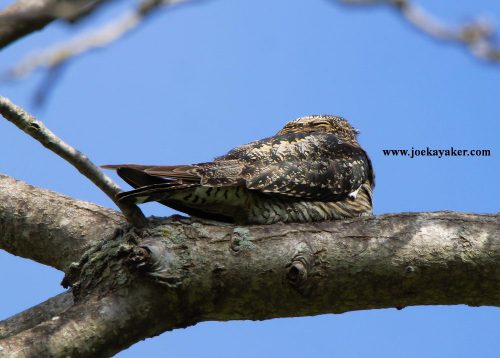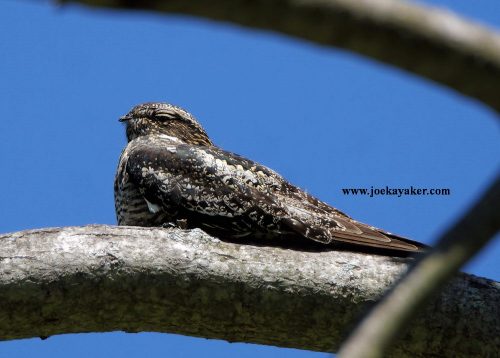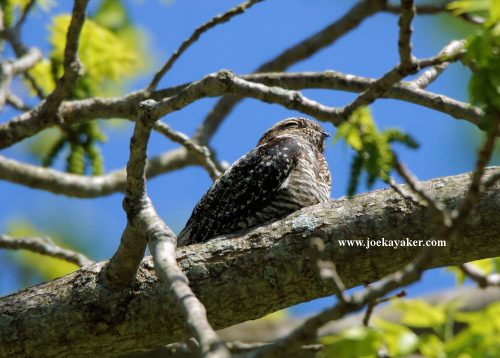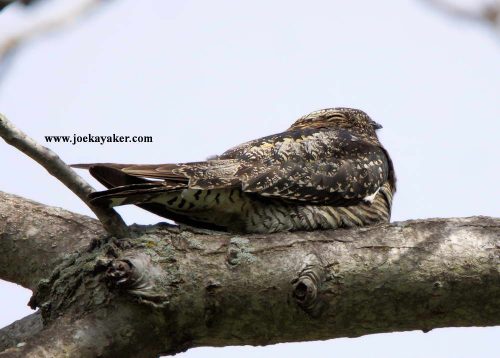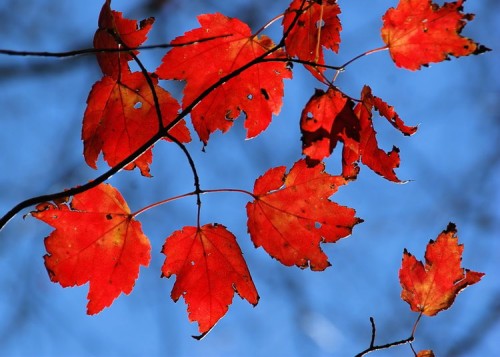Monday, May 13, 2019,
Four Harbors Audubon Society has monthly bird walks at Frank Melville Memorial Park in Setauket. I attended the most recent walk on this past Saturday. I had arrived a couple hours early in part to see what I could see, but mostly because, well, I really like that park. It’s a great place. As I was wandering around, I met up with a fellow photographer. We were comparing notes and she mentioned that she had seen a Common Nighthawk snoozing away in a nearby tree. These are photographs of that bird.
At the appointed time, I joined the Four Harbors group at the starting point of the walk, which is next to the Setauket Post Office that borders the park. When I saw my friend Luci, who is one of the leaders of our bird walk, I showed her one of the photographs I had taken of the Nighthawk. Here is a bit of our exchange:
Luci asked, “Where did you take this? Was it here? Can you show me where it is?”
I answered, “Yes but then I’ll have to kill you”. Yeah, I am a wiseguy most of the time.
Luci replied, “You can kill me, but show me the bird first”. Luci can be a wiseguy too.
And that, my friends, is a typical birder for you.
Perhaps, a little explanation is due here. Nighthawks are not just another bird to us at Four Harbors, especially at Frank Melville Park. In 2016, some observers, including celebrated author Carl Safina and two of our board members, Patrice Domeischel and John Turner, noticed a multitude of Nighthawks flying in the skies above the park. They decided to start what became known as the Stone Bridge Nighthawk Watch. You can click on the link for more information. The gist of it is that Four Harbors counts migrating Nighthawks. This is a citizen scientist project and all are welcome and encouraged to join us.
A word of caution concerning this and any other Nighthawks you may see during the day. Nighthawks are crepuscular, which means they are most active at dawn and dusk. They tend to sleep during the day. These birds need their rest so that they can continue their nightly migration. The Nighthawks don’t live here; they’re just passing through and really do need to conserve their energy during the day. So, please, try not to disturb these birds while they sleep. Despite their moniker, Common Nighthawks are in steep decline and are deserving of as much TLC as we can give them.
We’re smack in the middle of migration season for many birds so there is a lot to see during this time of year. During the course of the walk, we saw several species of warblers, a pair of Redstarts, and a bunch of Baltimore Orioles. So many colors and so animated. All of them flitting from tree to tree and branch to branch, flashing their bright yellows, reds, oranges, and blues.
On a day where we saw all of that beauty and action, it was this nondescript lump of a bird that garnered the most attention. Go figure. JK

